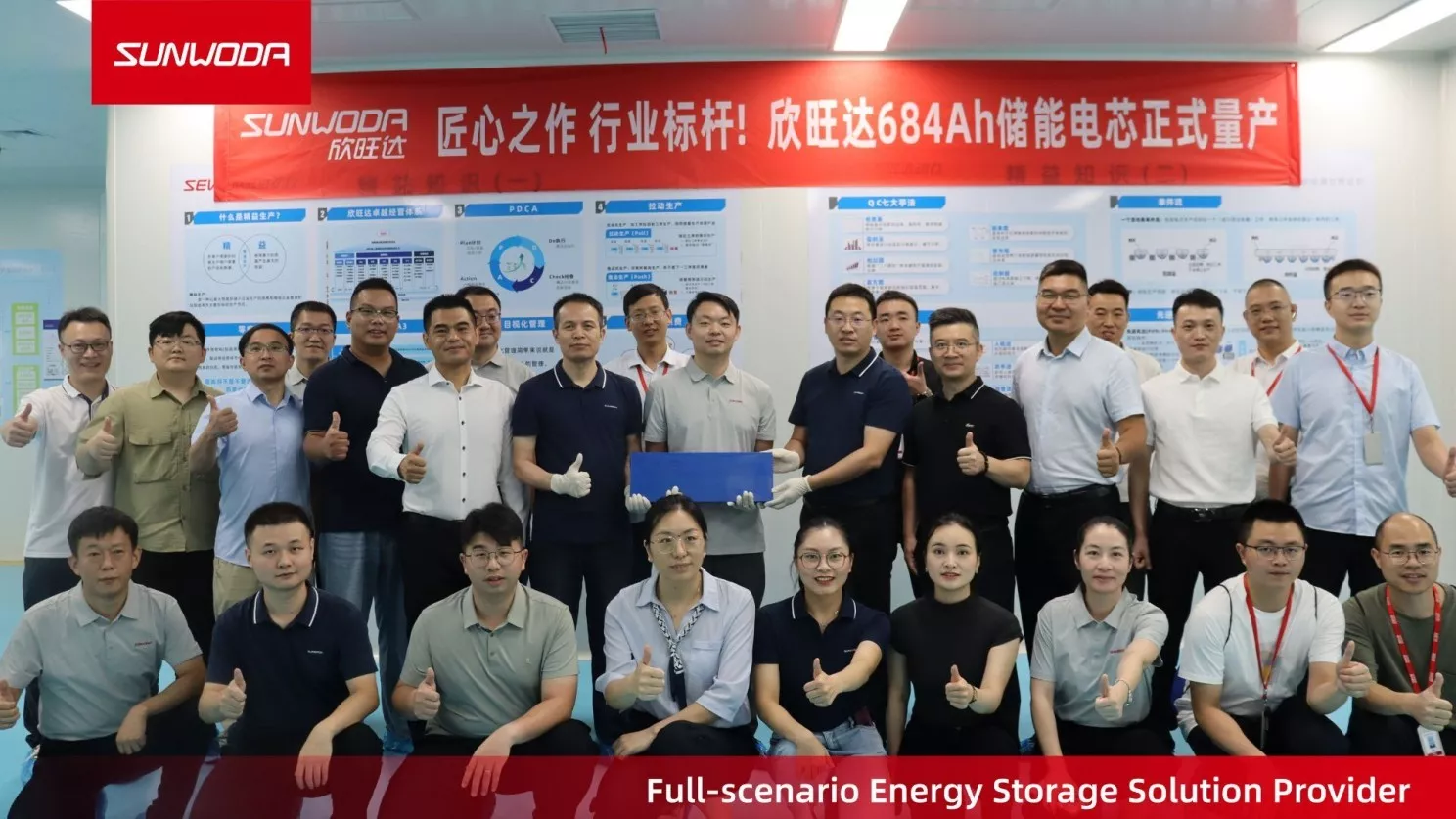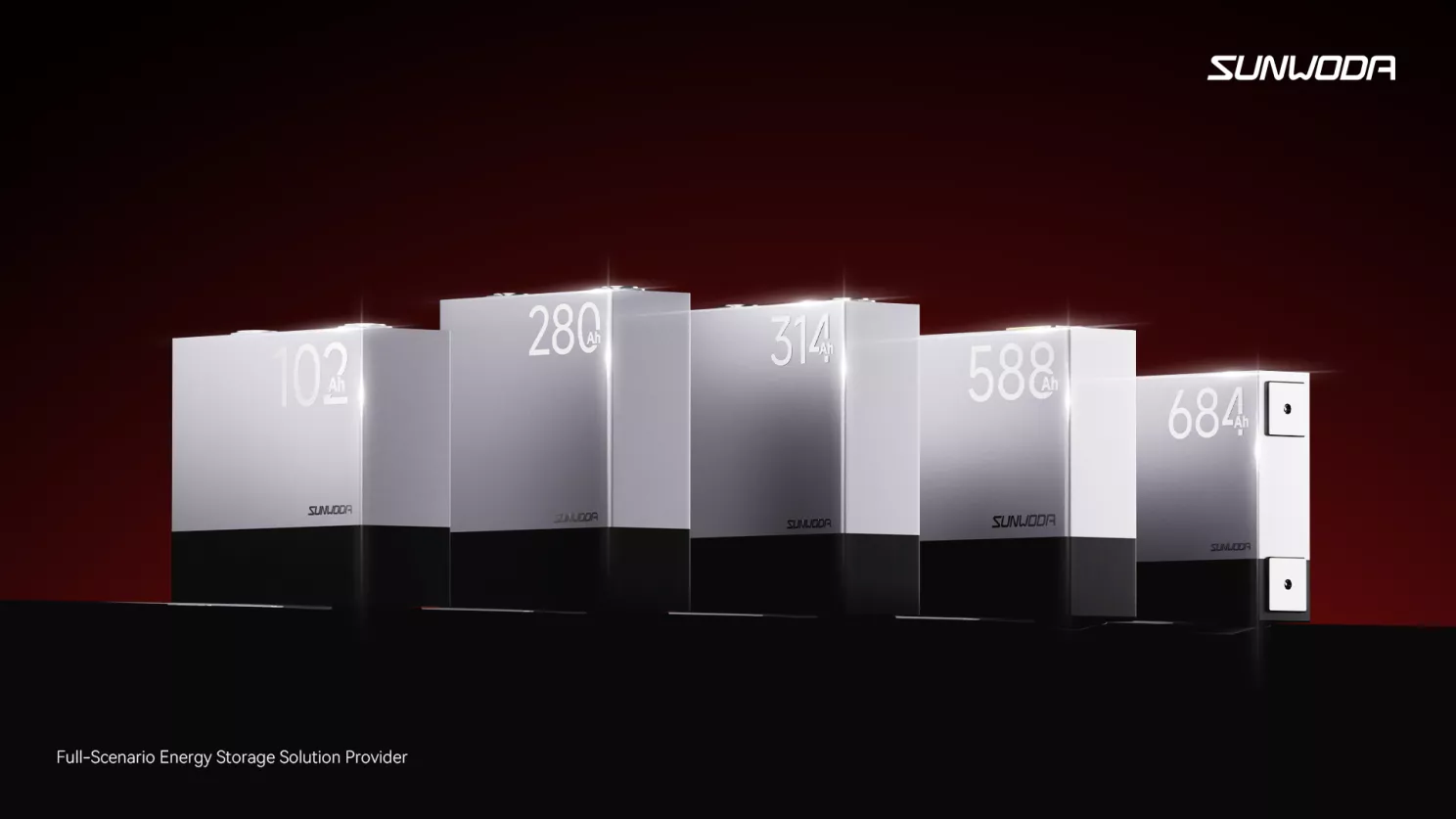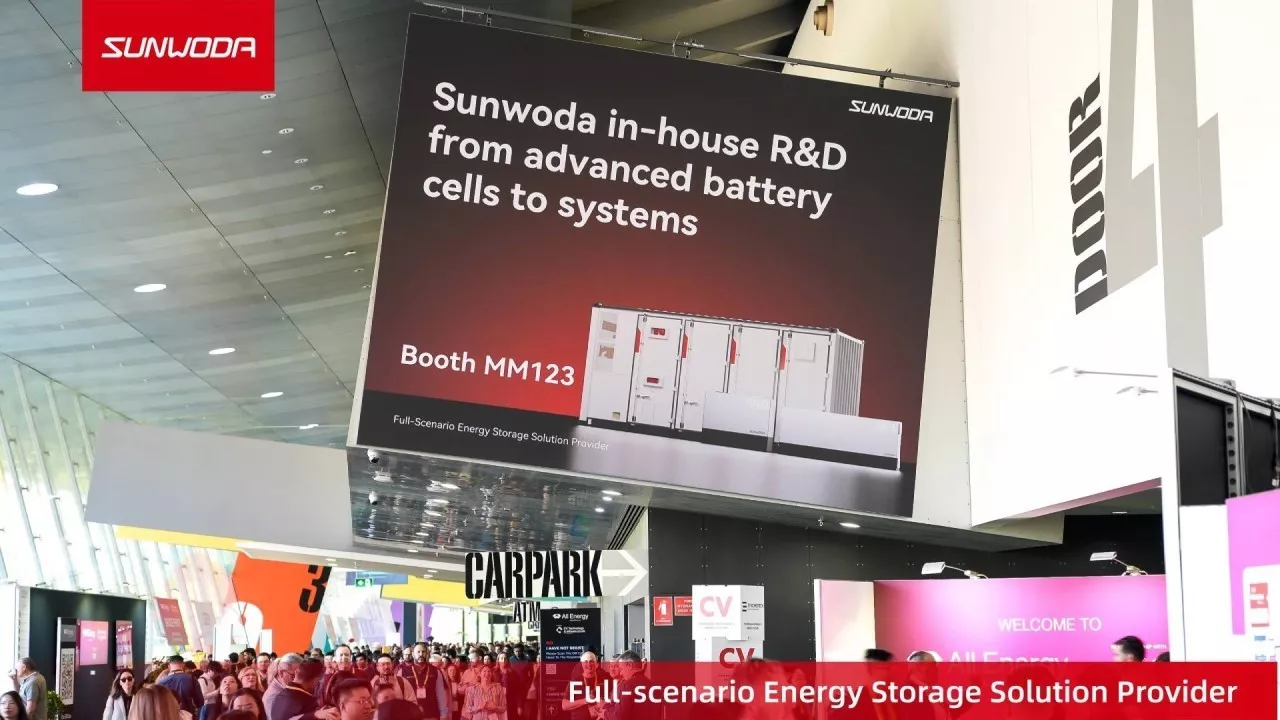Following the official debut of its next-generation 684Ah and 588Ah energy storage cells at RE+ 25 in Las Vegas on September 9, Sunwoda today announced that the 684Ah cell has entered mass production in China.

Breakthrough 684Ah Cell for Next-Generation Energy Storage
Sunwoda’s newly launched 684Ah cell, developed with advanced stacking technology, delivers an industry-leading energy density of over 440Wh/L. Featuring a thermal-electric separation design and a three-dimensional heat dissipation structure, the cell ensures safe and stable performance throughout its lifecycle. With a service life exceeding 20 years, it integrates seamlessly with 10ft, 20ft, and 30ft containers, providing outstanding flexibility for diverse energy storage applications.
Its high-density design reduces container usage by 27%, streamlines assembly, lowers system costs, and achieves an 8% reduction in LCOE—accelerating deployment and improving project economics.
On September 10, Sunwoda officially announced the start of mass production in China, ensuring capacity readiness to meet fast-growing market demand.

Evolving Energy Storage Cells: Building a Comprehensive Product Portfolio
From 102Ah, 280Ah, and 314Ah to the newly launched 684Ah and 588Ah, Sunwoda has continuously advanced its energy storage cells, creating a full-spectrum portfolio with higher energy density, longer service life, and stronger system compatibility. This evolution significantly enhances integration efficiency, improves project IRR models, and unlocks new value creation opportunities across the energy storage industry. Coupled with a robust global manufacturing footprint spanning China, Thailand, Hungary, and other key markets, Sunwoda ensures localized production and reliable supply chain support to meet growing customer demand worldwide.

Looking ahead, Sunwoda remains committed to technology-driven innovation and uncompromising quality. By delivering safer, more efficient, and higher-value energy storage cells and system solutions—and leveraging its international manufacturing and delivery capabilities—the company aims to accelerate the global low-carbon transition and promote sustainable development in the energy sector.


